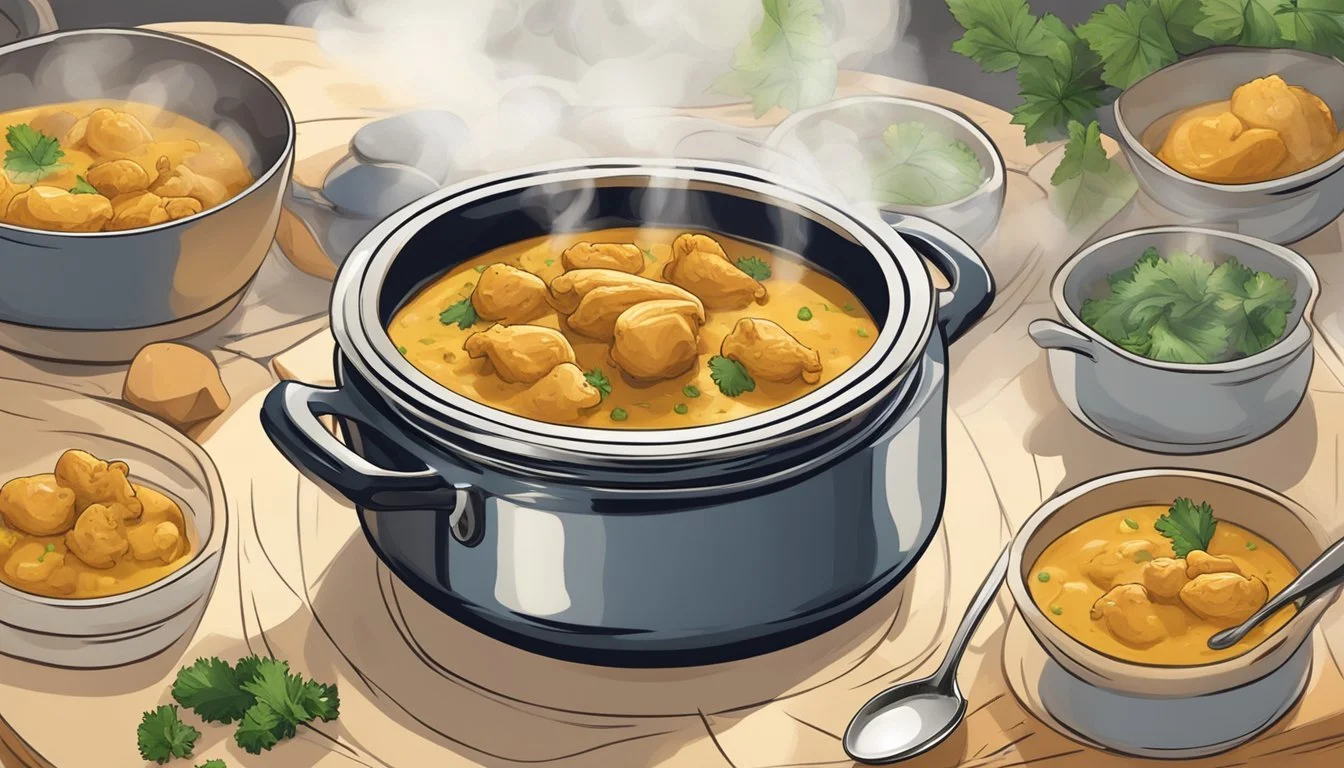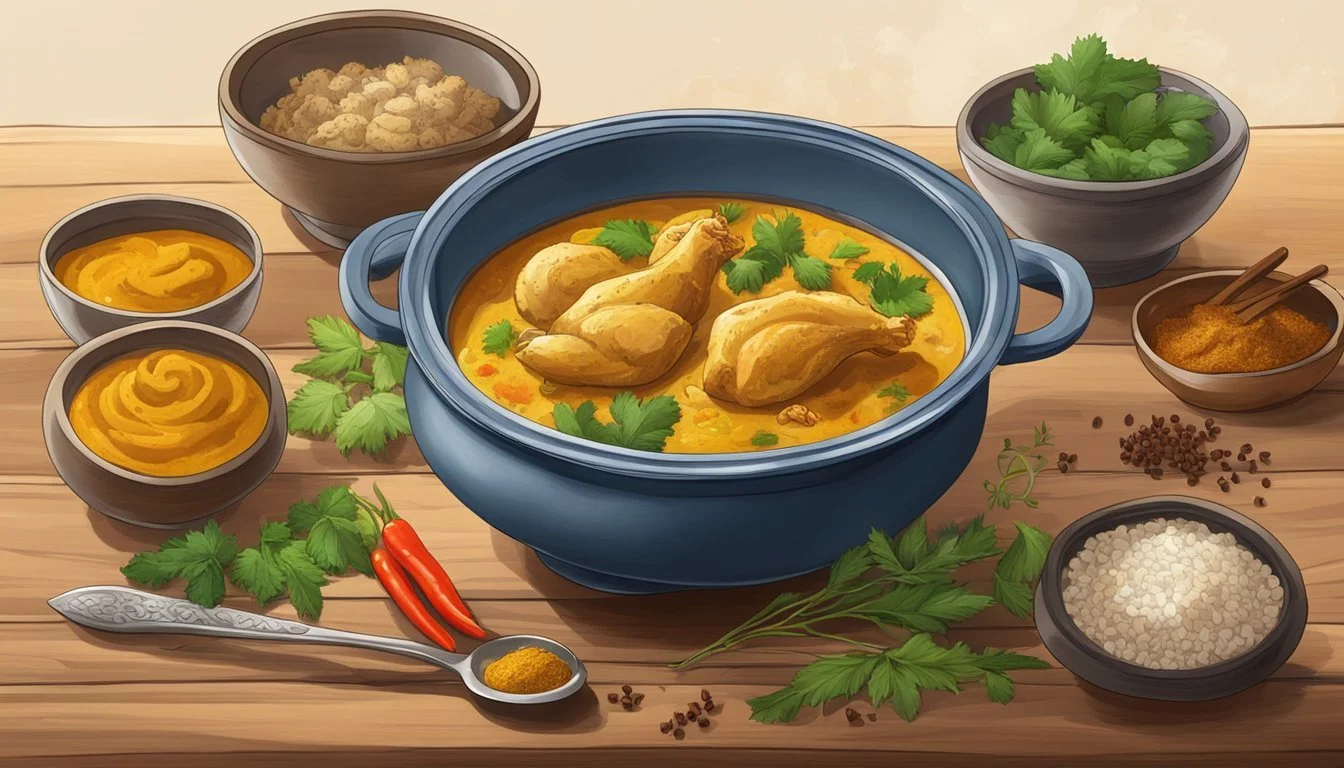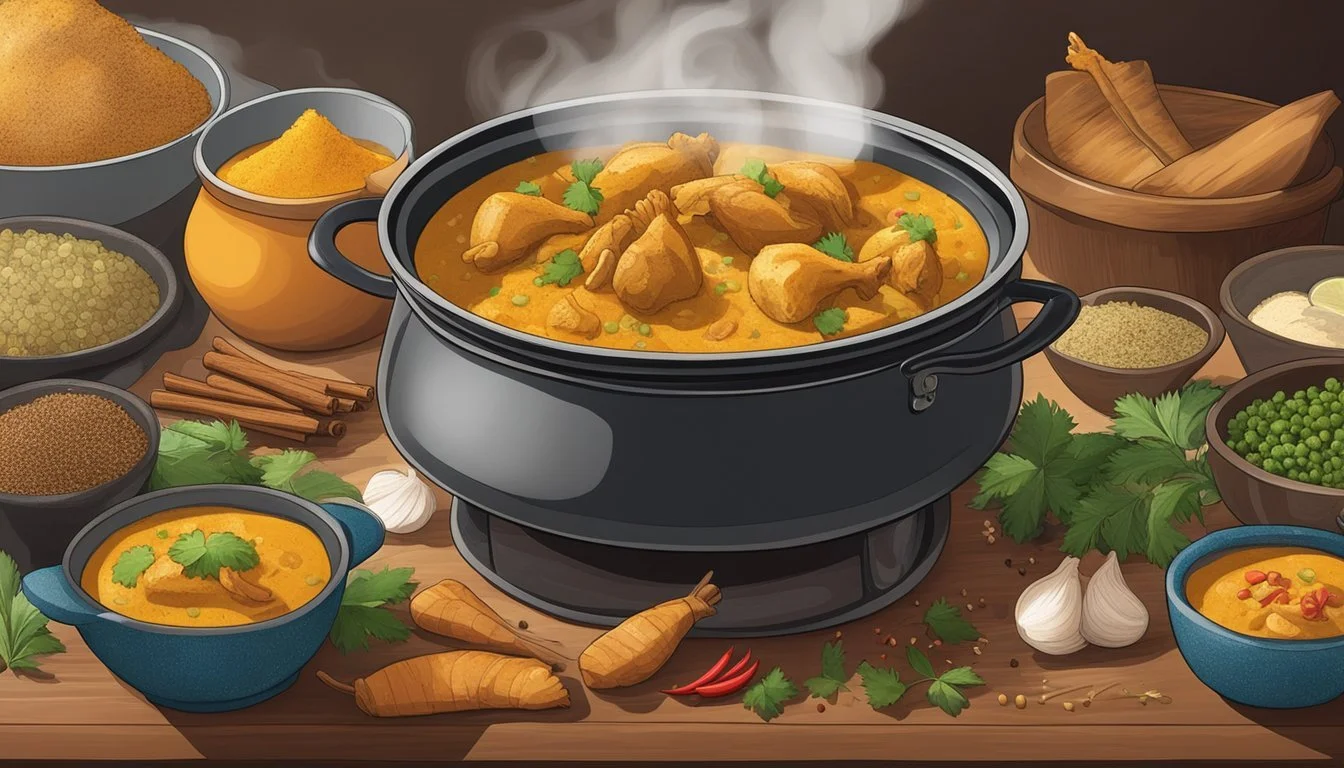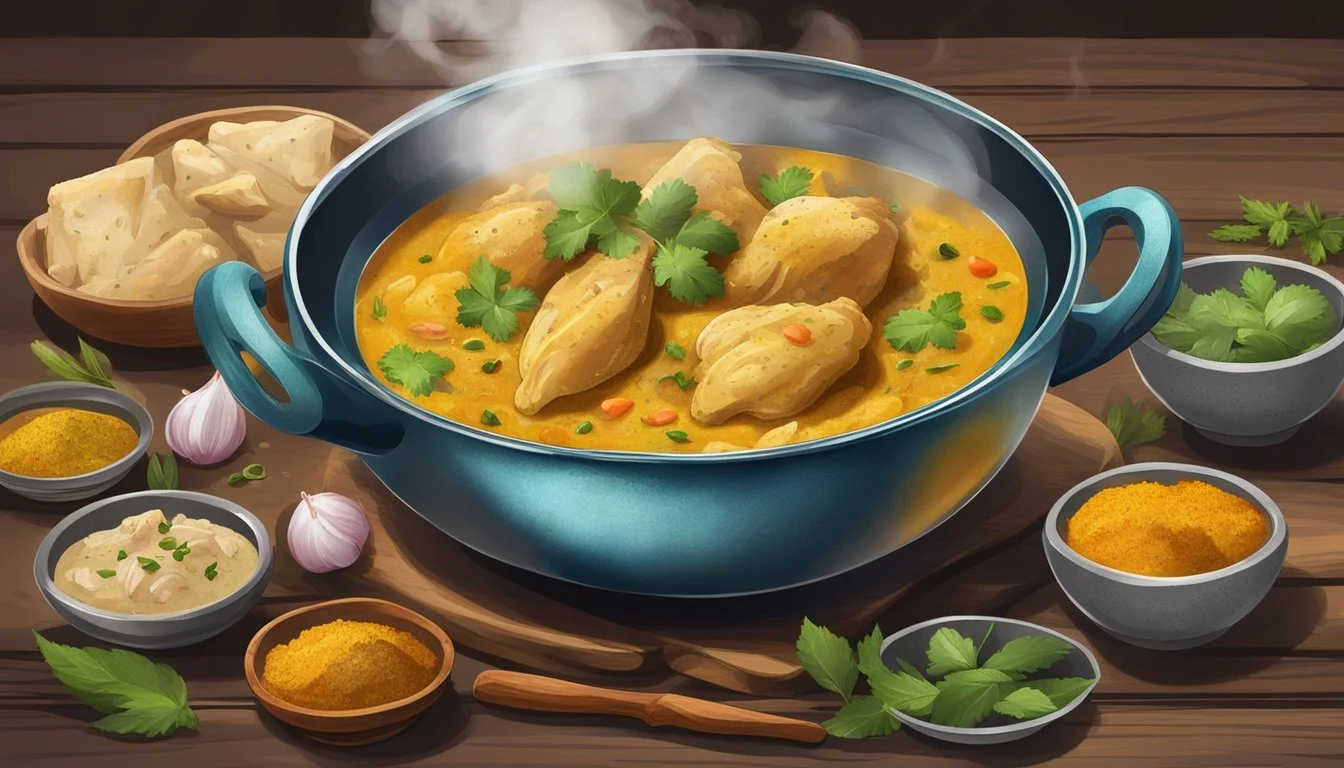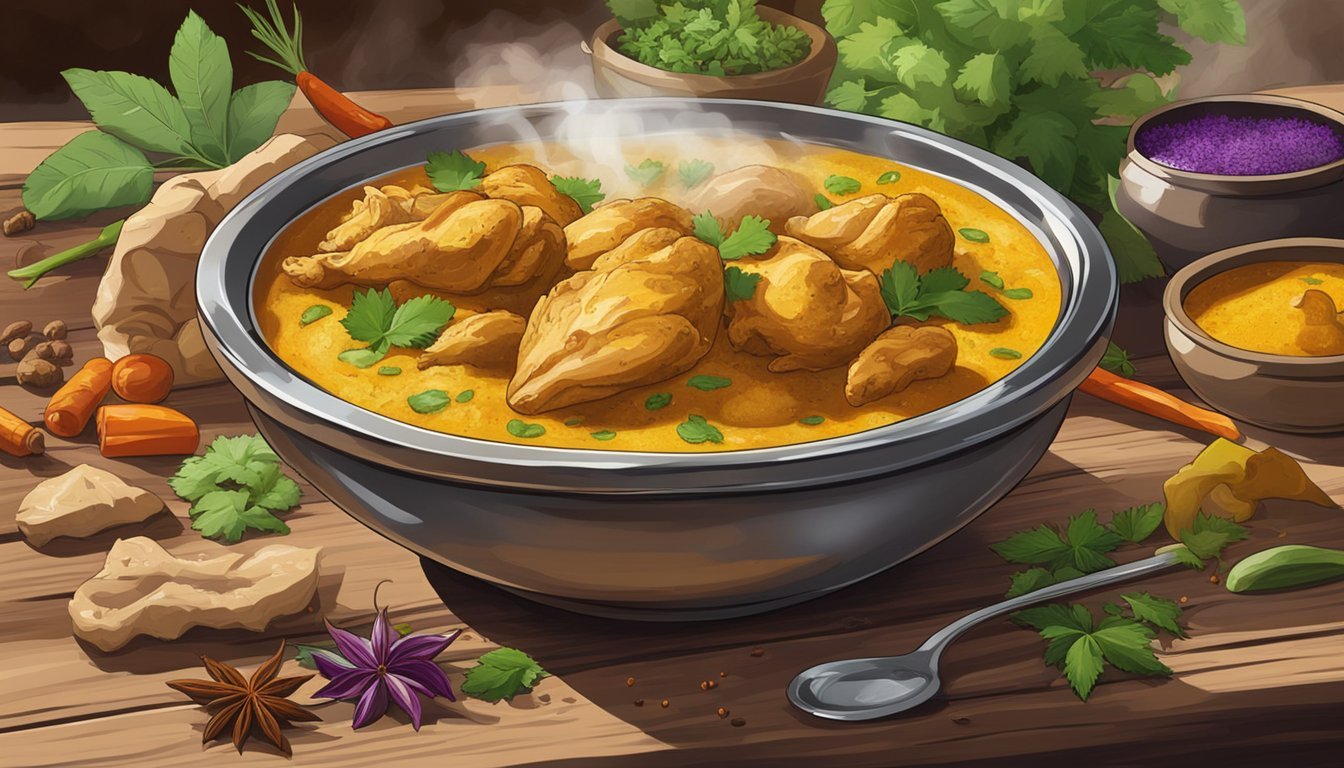Best Way to Reheat Indian Chicken Korma
Tips for Maintaining Flavor and Aroma
Reheating Chicken Korma while preserving its rich flavor and aromatic spices is a challenge many face after enjoying an Indian feast. Chicken Korma, a beloved Indian dish, is best known for its creamy texture and complex blend of spices, including garam masala, turmeric, and ginger. As a dish that often tastes better the next day, understanding how to properly warm it up is crucial to enjoy its intricate layers of flavor just as intended.
The key to effectively reheating Chicken Korma lies in gentle heating methods that prevent the dish from drying out or separating. The use of moderate temperatures and covering the dish to retain moisture helps in keeping the korma close to its original state. It is also vital to reach a safe internal temperature to ensure the dish is not only delicious but also safe to consume.
Addressing the reheating process with care ensures that the korma's tender pieces of chicken remain succulent and the sauce retains its aromatic essence. Whether utilizing an oven or a microwave, there are specific steps one can follow to achieve the best results. This not only enhances the dining experience but also respects the culinary artistry behind this Indian classic.
Understanding Chicken Korma
Chicken Korma is a rich and creamy Indian dish with a unique blend of aromatic spices and a mild flavor profile. Its preparation requires precise ingredient selection and cooking techniques to achieve the authentic taste.
Key Ingredients for Flavor and Texture
Chicken Korma is celebrated for its aromatic and complex flavors. At its core are:
Chicken: Often boneless thigh or breast pieces, contributing to the dish's protein content.
Yogurt and Cream: They provide a creamy texture that smoothens the sauce.
Spices: Aromatic spices such as garam masala, cumin, coriander powder, cardamom, cinnamon, and turmeric impart depth and warmth.
Almond or Coconut: Ground almonds or coconut add richness and subtle sweetness.
Garlic and Ginger: These staples create a potent base for the sauce.
Ghee: Clarified butter ghee is used for its distinct flavor over regular oil.
The Basics of Preparing Chicken Korma
The preparation entails a two-step process: marination and cooking.
Chicken is first marinated in a spice mixture that often includes ginger, garlic, yogurt, and turmeric.
Cooked slowly in a sauce, which typically contains ground almonds or coconut, and a medley of spices, it is then finished with a swirl of cream or more yogurt to enhance richness.
Distinctive Characteristics of Indian Chicken Korma
Each Indian Chicken Korma recipe speaks to a symphony of flavors:
Aromatic spices: Provide a tantalizing aroma that is synonymous with this dish.
Creaminess: Comes from the addition of yogurt and cream, setting it apart with its smooth consistency.
Mildness: It's less fiery than many Indian dishes, preferred by those who appreciate flavor over heat.
Textures: The sauce's texture is often punctuated by the presence of onions, tomatoes, and sometimes nuts, offering layers of taste and a wholesome mouthfeel.
Comparative Analysis: Chicken Korma and Chicken Curry
While both dishes include chicken and a blend of spices, there are notable differences:
Flavor: Chicken Korma tends to be milder and richer than the average chicken curry, which can range from mild to fiery and may not include a creamy base.
Spices: Korma often uses a specific blend which may include cardamom and cinnamon, while a typical curry could rely on curry powder or a different blend of spices.
Consistency: Korma sauce is creamier and more indulgent due to the use of yogurt, cream, and nuts, whereas curries might be lighter and heavily reliant on tomatoes or water/ chicken broth.
Proper Storage Techniques
To maintain the flavorful essence and proper texture of leftover Indian Chicken Korma, it is crucial to adhere to effective storage strategies. These methods ensure the dish's aromatic profile remains intact and the chicken retains its quality.
Refrigeration Best Practices
When refrigerating Chicken Korma, it is essential to limit exposure to air. Leftovers should be stored in an airtight container and placed in the refrigerator within two hours of cooking to prevent bacterial growth. Yogurt sauce, often a component of Korma, can separate if not stored properly; therefore:
Temperature: Keep the fridge temperature below 40°F (4°C).
Container: Use shallow containers to cool the Korma evenly.
Sealing: Ensure that the lid is secure to help preserve the aroma and texture.
Freezing for Longevity
For those who aim for convenience or need to extend the shelf life of their leftovers, freezing is an optimal choice. Chicken Korma can be successfully frozen, and here’s how one should approach it:
Cooling: Allow the Korma to cool completely before freezing to prevent ice crystal formation.
Airtight Containers or Freezer Bags: Portion the Korma into desired servings, minimizing air exposure in each.
Labeling: Mark the containers with the date to keep track of freshness (typically up to 3 months).
Thawing: When ready to consume, thaw in the refrigerator overnight for best results, to retain the texture and flavor.
Reheating Methods
When reheating chicken korma, one should keep in mind the goal of preserving the dish's creamy texture and the integrity of its aromatic spices. Choosing the appropriate method is crucial to maintain these qualities.
Microwave Reheating
Microwaving is a quick method, suitable for when time is of the essence. To Reheat chicken korma in the microwave:
Place the korma in a microwave-safe dish.
Add a tablespoon of water to prevent drying out.
Cover the dish with a microwave-safe lid or plastic wrap.
Heat in 30-second intervals, stirring each time to ensure even heating until the internal temperature reaches 165°F (74°C).
Stovetop Reheating Technique
Reheating on the stovetop in a skillet allows for better control over the temperature, which can protect the dish's flavors and creamy texture.
Transfer the korma into a skillet.
Add a small amount of water or broth.
Warm on a low to medium heat, stirring frequently to prevent sticking and overheating.
Ensure the korma is piping hot throughout before serving.
Oven-Baking for Even Heat Distribution
The oven is ideal for even reheating without compromising the texture or flavor of Indian recipes.
Preheat the oven to 350°F (175°C).
Place the chicken korma in an oven-safe dish, slightly covered with water.
Cover the dish with foil to retain moisture.
Bake for 15-20 minutes or until it reaches the safe internal temperature.
Slow Cooker Warming Option
A slow cooker can gently reheat curry, allowing flavors to meld while keeping the chicken tender.
Place the chicken korma into the slow cooker.
Set it on the low setting to avoid overcooking.
Heat until the korma is thoroughly warmed, typically for 1-2 hours, depending on the portion size.
Safety and Quality Considerations
Reheating chicken korma requires careful attention to safety to prevent bacterial growth and maintaining the quality to preserve its creamy texture and flavor.
Maintaining Safe Internal Temperature
It is crucial to ensure that the leftovers reach a safe internal temperature of 165°F (74°C) during reheating to eliminate harmful bacteria. To accurately measure this temperature, use a food thermometer.
Preserving the Taste and Creaminess
The delicate balance of aromatic spices and the creaminess of chicken korma can be preserved by gentle reheating. To retain moisture, an oven-safe dish should be used, covered with foil, and heated at 350°F (175°C). Alternatively, warming the korma over medium heat in a saucepan while stirring occasionally helps maintain its texture and flavor.
Preventing Contamination
Proper storage is equally important for safety and quality. Chicken korma should be stored in an airtight container in the refrigerator to limit exposure to bacteria. When reheating, ensure the container is clean and the korma is promptly heated to minimize the time it's within the temperature range where bacteria thrive.
Safe storage practices:
Store in airtight containers.
Refrigerate at or below 40°F (4°C).
Reheating best practices:
Reheat to an internal temperature of 165°F (74°C).
Use appropriate methods like oven or stovetop to avoid overheating and ruining the texture.
Serving Suggestions
When reheating chicken korma, complementing it with the right sides and garnishes not only enhances the flavors but also pays homage to its rich Indian culinary heritage.
Pairing with Sides
Chicken korma is traditionally served with basmati rice or naan bread. One can opt for steamed basmati rice which, with its fluffy and fragrant grains, provides the perfect backdrop for the creamy korma sauce. Alternatively, warm, buttered naan bread complements the dish with its soft texture, making it ideal for sopping up the flavorful sauce.
Rice: Steamed basmati rice works best.
Breads: Warm naan or other Indian breads serve as excellent scoopers.
Garnishing for Enhanced Flavor
The garnish plays a critical role in Indian cuisine. Sprinkling finely chopped cilantro over the chicken korma introduces a hint of fresh greenery and brightness. A scatter of cashews or ground almonds can add a delightful crunch and nuttiness. Those looking for an extra layer of flavor can also add a few lightly crushed green cardamom pods for a subtle, aromatic warmth. A dollop of coconut cream on top can add a luxurious creaminess and a mild tropical essence to the dish.
Herbs: Fresh cilantro for a pop of color and taste.
Nuts: Cashews or almonds for crunch and flavor.
Spices: Green cardamom pods for aroma.
Creams: Coconut cream for added richness.
Advanced Tips and Variations
When reheating Indian Chicken Korma, one can enhance the dish by considering dietary restrictions, adjusting spice levels, and choosing different types of chicken. These adjustments can preserve the aromatic taste while catering to specific dietary needs or personal flavor preferences.
Altering Ingredients for Dietary Restrictions
For those with dietary restrictions, Indian Chicken Korma can be modified without compromising its essential flavors. Substitute coconut milk for cream to cater to lactose-intolerant individuals or those following a vegan diet. Milk powder can be replaced with dairy-free alternatives, such as almond or soy milk powder. Ensure that the spices used, like garam masala, red chili, chili powder, black pepper, and ground cumin, are fresh and of high quality for the best flavor profile.
Experimenting with Spice Levels
Indian recipes often involve a complex layering of spices, which can be adjusted to taste. For a milder Korma, reduce the amount of red chili and chili powder. Conversely, to heighten the spiciness, add extra black pepper or a pinch of ground red chili to the dish when reheating. Always taste and adjust the spices in increments to achieve the desired level of heat.
Substituting Chicken Types
Chicken Korma can be made with various cuts of chicken. Chicken breasts are lean and reheated quickly, making them suitable for a less fatty option; chicken thighs offer a juicier and more flavorful outcome due to their higher fat content. For an authentic experience, one might opt for bone-in chicken pieces, as the bones contribute to the flavor of the sauce. However, if convenience is a priority, boneless chicken cuts are easier to manage when reheating and serving.
Conclusion
When reheating Chicken Korma, the goal is to maintain the dish's original flavor integrity and the rich aromatic experience that's characteristic of this Indian cuisine. Due to the assortment of spices and tender chicken used, careful application of heat avoids dulling these essential aspects.
Microwave: Use a microwave-safe dish, cover the dish with a microwave-safe lid or plastic wrap to trap steam. Heat in short bursts, stirring occasionally to distribute heat evenly.
Oven: Preheat to 350°F. Transfer Korma to an oven-safe container, cover with foil, and heat until the internal temperature reaches 165°F.
Maintaining the moisture of Chicken Korma is crucial, so add a little water if the curry seems dry. In case of takeaway leftovers, proper storage in the refrigerator is key before reheating to ensure the Shahi flavors remain robust.
Lastly, balance is vital where aromatic spices are concerned. One should avoid high heat to prevent the spices from becoming bitter, thus preserving the Korma's hallmark flavor profile. Whether enjoyed freshly made or as a scrumptious leftover, Chicken Korma's unique flavor and aromatic spices can be consistently savored with these reheating methods.

